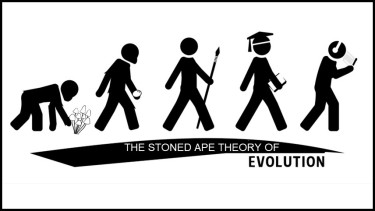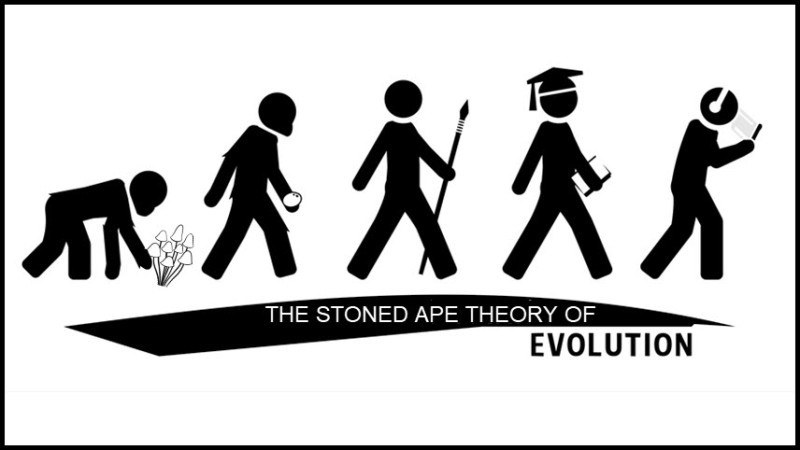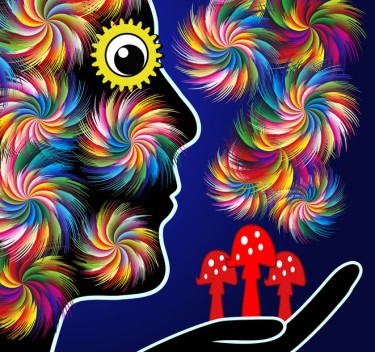
There are so many mysteries and conspiracies about how humans came to be what they are today. Through the years, modern science has diverted some attention to unraveling some of these mysteries. But, as some get unfurled, more are being uncovered.
The relationship between the effects of magic mushrooms and evolution is currently being investigated. Scientists suggest that we revisit an older theory to comprehend it fully. In the 90s, Terence McKenna put forward the "stoned ape" theory, which proposed that magic mushrooms play an essential role in developing human cognition and senses.
In this piece, we'll try to dig deeper into McKenna's theory and check out what modern science has to add to it.
Psilocybin Mushrooms and Evolution
Information about Terence McKenna and his Stoned Ape theory is not new. It has been available for at least two decades. All lovers of psilocybin, or magic mushrooms, who know about this theory think it's incredible that their magic drug played a vital role in evolution.
Scientists who have studied the stoned ape theory say that the hypotheses, unlike several others, can be modified to fit into several existing assumptions without having contradicting meanings.
For those unfamiliar with this concept, the stoned ape theory or hypothesis says that the rapid cognitive development of humans was directly caused by the indiscriminate consumption of psilocybin mushrooms about 2 million to 300 thousand years ago.
The theory posits that the apes migrated from the forests of Africa and the savannas into the grasslands. Their habitat change from the trees to grasslands describes how the apes became bipedal species. Scientists explain that as the early apes adapted to the grasslands, they had to hunt for prey. Like it is now, large herds of prey leave heaps of dung around. Psilocybin mushrooms thrive best in manure. So, there's no way the early hominids couldn't have eaten them as they followed the trail left by the dung.
The main point wrought by the stoned ape theory is that the early hominids' cognition, empathy, and language were improved chiefly by the impacts of these dung-grown psilocybin species of mushrooms. These magical foodstuffs aided in the rapid and accelerated evolution.
Terence McKenna was famous in the late 1900s for his heightened interest in psychedelics, mostly psilocybin-derived mushrooms. The late philosopher was also an academic and a psychonaut who had a fair number of fans and enemies. McKenna was one of those philosophers who were often at odds with society. He was both controversial and radical.
Terence was an ethnopharmacologist with unique ideas about drug use. Many of his views stemmed from ancient evolution history, including the stoned ape theory. In his book, "Food for the Gods," McKenna wrote about his beliefs comprehensively. The book, which was written a few years before his death, focused on psychedelics and human consciousness, as well as other things McKenna found relevant.
The Relationship Between Mushrooms and the Stoned Ape Theory
Without psilocybin mushrooms, there wouldn't be a stoned ape theory. The most recent investigation provides evidence that the fungus species is the earliest multi-cellular living thing on earth. Records show that the first recorded fungus dates back at least 2 billion years.
On the other hand, Homo sapiens first appeared about 649 million years ago, although the early homo sapiens were called homo erectus. This means the fungus species predates humans by 2 billion years.
The hypotheses that mushrooms have had a significant impact on human evolution and consciousness become more believable when one experiences the magical and enlightening trips offered by these fungi. Anyone who has tried psilocybin mushrooms may testify that they gained new information that increased their empathy and allowed them to see life from another perspective. Simply put, they experience a drastic impact on their consciousness.
Modern science shows that psychedelics can immensely enhance human consciousness. This makes it easy to believe that McKenna was on the right path when he said psilocybin played a vital role in evolution. Another modern scientific discovery is that psilocybin can increase neurogenesis and neuroplasticity to allow the brain to replace old pathways. This implies that the magic mushroom could have helped the early hominids learn and develop faster.
The Controversial Aspect
The stoned ape theory is not without imperfections. The major flaw in the hypothesis boils down to the oversimplification of the events surrounding human evolution. Modern science points out that evolution is a very complex process that comes to be due to many factors.
McKenna suggests that just one singular event influenced one of the major events in evolution. Human consciousness may have been affected by the consumption of psilocybin. However, it is hard to accept that that alone is responsible for the development of homo sapiens.
Human empathy is more profound than those of animals or even plants. We are the only living organisms that exhibit this deep, conscious experience of things. Although magic mushrooms promote these behaviors, it may be an oversimplification to rule out other hypotheses positing that humans attained such high levels of consciousness due to the benefits gained from increased collective capacities. Instead, it is better to propose that these psilocybin mushrooms simply enhance and accelerate the changes that are already in motion.
Other Information
The increasing research on psychedelics shows that they induce a serotonin feedback loop in the brain. Drugs such as DMT increase the release and receptivity of serotonin in the brain. This allows the brain to build and replace existing pathways. Additionally, psychedelics affect the claustrum, also known as the default mode network. The claustrum is a thin web of neurons that extends to all brain areas. It manages multi-stimuli associated with the conscious mind.
Bottom Line
The stoned ape theory, which was once met with skepticism, is now being embraced. Not because it is correct, but because the hypothesis was well ahead of its time. Although McKenna's original piece may not be the right thing based on its oversimplification, it would undoubtedly point modern scientists in the right direction. The stoned ape theory will be a fundamental idea that will be enjoined and investigated with other views till an accurate theory is formulated.







